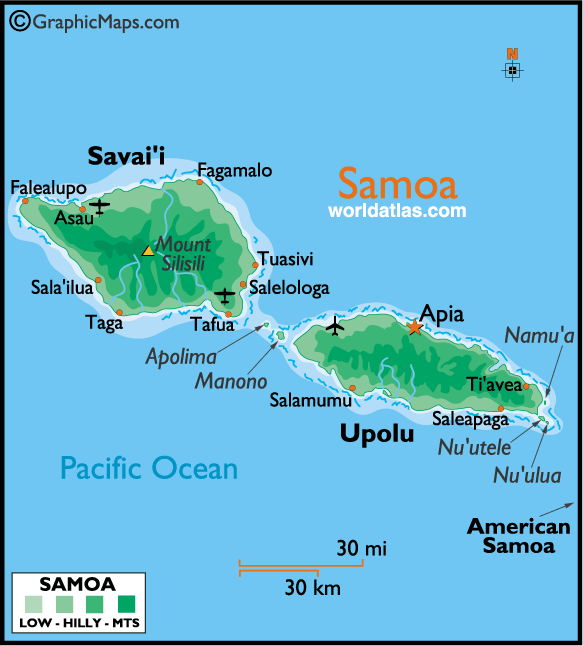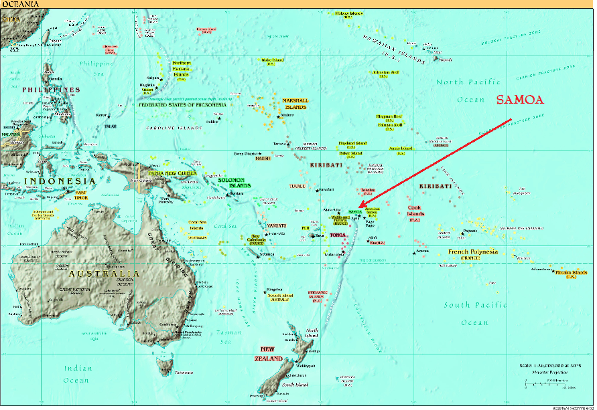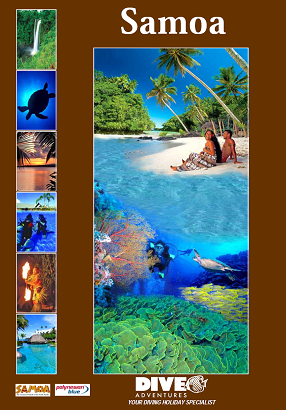
The Islands of Samoa (pronounced Saaah-Moah) are located halfway between New Zealand and Hawaii and East of the International Dateline. Samoa is comprised of 10 islands, of which Savaii and Upolu are the largest. The country’s capital of Apia and Faleolo International Airport are both located on the main island of Upolu.

HISTORY OF SAMOA
The Fa’a Samoa culture (the Samoan Way) is over 3,000 years old and Samoan mythology and legends say they descended from the Gods and Heavens to inhabit these islands.
European whalers and traders started to arrive in the late 1700’s. The most important agents of change in Samoa were the Western missionaries, converting the people from belief in Gods for the sun, earth, heavens and sea to the one God.
In 1899 after years of civil war, the islands of the Samoan archipelago were divided – the Germans taking the islands to the west and the Americans taking the islands to the east, now known as American Samoa.
After the outbreak of World War I, New Zealand captured Western Samoa from the small German company stationed on the islands. At the end of the war N.Z. took administrative control on behalf of the United Nations from 1918 until independence on 1st January 1962, Western Samoa becoming the first Pacific nation to gain Independence and was known as Western Samoa until 1997.
DIVING IN SAMOA
Diving in Samoa offers something special for both the novice and the experienced diver. The islands are blessed with a rich marine life and the surrounding reefs are home to some 900 fish species including including anemone, rays, trevally, napoleon wrasse, tuna, barracuda, snapper, wrasse, grouper, butterfly fish, angel fish, spadefish, giant clams, morays, turtles and reef sharks.
There are more than 200 varieties of coral, as well as various swim throughs and tunnels to explore. The warm clear waters provide excellent visibility of between 15 and 50 m and temperatures ranging from 25° to 30°C.
For Advanced and adventurous divers, much of the reef remains unexplored and there is the potential to discover brand new dive sites in the area.
On Upolu, two favourite dive sites are:
THE ROCK
As you descend on this dive you generally drop into a school of barracuda. Dropping onto the plateau between 12-18 m you feel as if you are floating in an aquarium. Hard corals and giant clams are surrounded by a variety of tropical fish, anemone, clown trigger fish, manta rays, trevally, napoleon wrasse, tuna and fusiliers often follow you around. The soft corals begin at 18 m as you drop off the plateau to search for sharks.
APOLIMA GARDENS
The coral garden off Apolima Island begins at 8 m and drops to 40 m and is a wonderland of colour and life between 10 and 20 m. Drift pass the large table corals which screen lobsters and rainbow runners. Unicorn fish, turtles, napoleon wrasse, reef sharks and blue fin trevally are a staple of this dive.
On the island of Savai'i, the wreck "Juno" is a nice, easy dive, only a 5 minute boat trip from shore. This was a 3 mast missionary sailing ship which sunk in Lelepa bay in 1881. This iron wreck is full of corals, where you can see trumpet fish, turtles and a wide variety of colourful reef fish, parrot fish, yellow snappers, big-eyes and much more. The maximum depth is 25 m.

